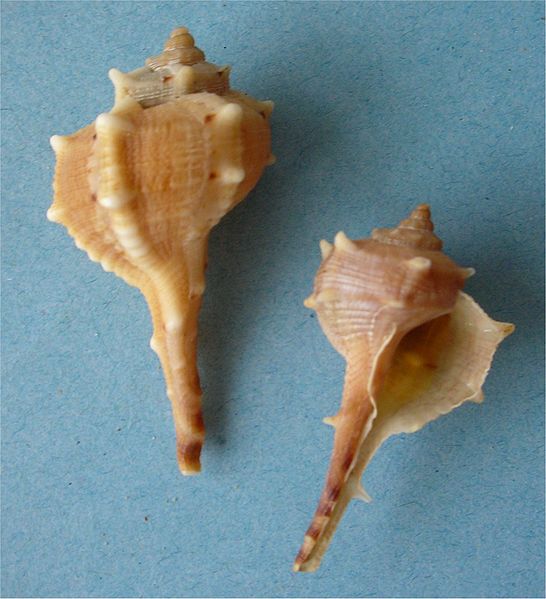Tyrian purple, also known as royal purple, imperial purple, or imperial dye, is a reddish-purple natural dye. The name Tyrian refers to Tyre, Lebanon, once Phoenicia. It is secreted by several species of predatory sea snails in the family Muricidae, rock snails originally known by the name Murex. In ancient times, extracting this dye involved tens of thousands of snails and substantial labour, and as a result, the dye was highly valued. The colored compound is 6,6'-dibromoindigo.
Fabrics dyed in the current era from different species of sea snail. The colours in this photograph may not represent them precisely.
A 20th-century depiction of a Roman triumph celebrated by Julius Caesar. Caesar, riding in the chariot, wears the solid Tyrian purple toga picta. In the foreground, two Roman magistrates are identified by their toga praetexta, white with a stripe of Tyrian purple.
Two shells of Bolinus brandaris, the spiny dye-murex, a source of the dye
Byzantine Emperor Justinian I clad in Tyrian purple, 6th-century mosaic at Basilica of San Vitale, Ravenna, Italy
Purple is a color similar in appearance to violet light. In the RYB color model historically used in the arts, purple is a secondary color created by combining red and blue pigments. In the CMYK color model used in modern printing, purple is made by combining magenta pigment with either cyan pigment, black pigment, or both. In the RGB color model used in computer and television screens, purple is created by mixing red and blue light in order to create colors that appear similar to violet light.
Image: Iris germanica (Purple bearded Iris), Wakehurst Place, UK Diliff
Image: Ghent Altarpiece D Popes Bishops
Image: M81
Image: Segmented aubergine Thailand








